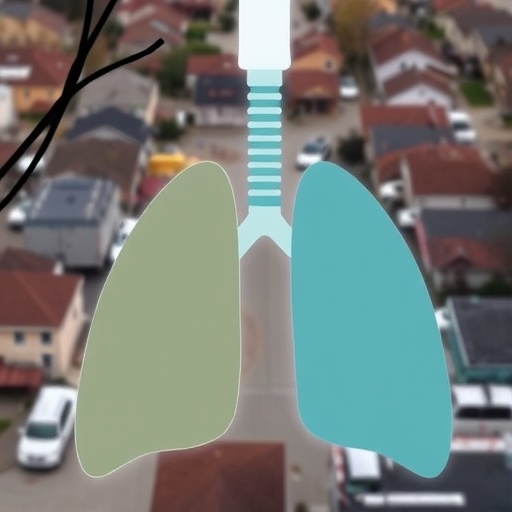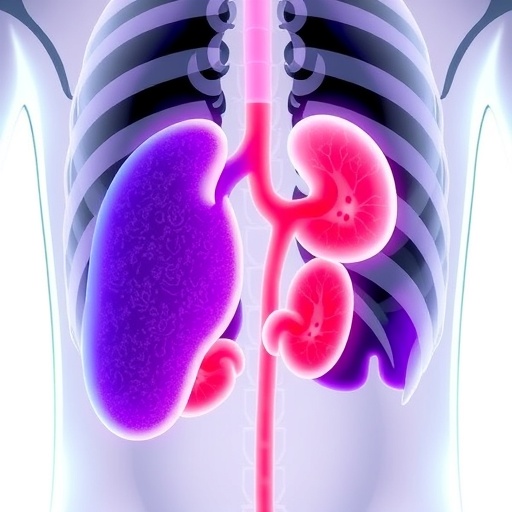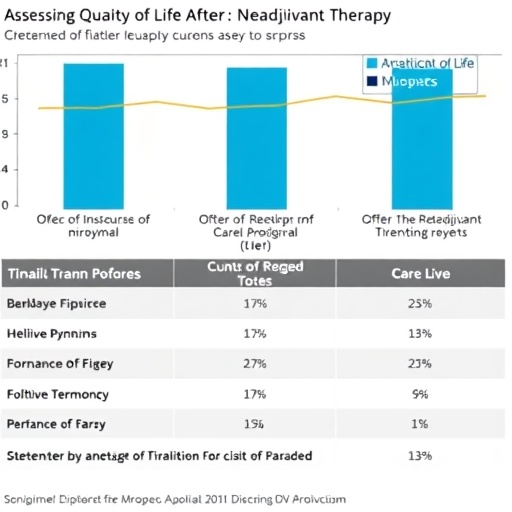A groundbreaking new study published in JAMA Network Open unveils the pivotal role of structural racism embedded within neighborhood conditions as a significant contributor to the development of lung cancer. This research offers compelling evidence that socioeconomic and environmental disparities rooted in systemic inequities extend well beyond social outcomes, directly influencing physical health and disease susceptibility. By exploring the pathways through which neighborhood-level factors, shaped by racial discrimination, exacerbate lung cancer risk, the study highlights urgent areas for policy intervention and public health reform.
Lung cancer remains one of the most lethal malignancies globally, and its incidence has historically been associated with smoking and occupational exposures. However, recent advances in epidemiology and social medicine have expanded our understanding of cancer etiology, stressing the importance of social determinants of health. This study situates structural racism as a core determinant that shapes neighborhood environments—such as housing quality, pollution exposure, access to health services, and economic opportunity—thereby indirectly increasing vulnerability to carcinogenic risks and limiting preventive care access.
To elucidate the mechanisms connecting structural racism and lung cancer development, the authors employed a multidimensional approach, incorporating geospatial analyses, neighborhood socioeconomic indices, pollutant exposure assessments, and individual-level health data. They demonstrated that neighborhoods experiencing systemic disinvestment and segregation, disproportionately inhabited by racial and ethnic minorities, show elevated levels of environmental toxins, including particulate matter and hazardous air pollutants. These exposures have been consistently linked to inflammatory processes and mutagenic effects pivotal in carcinogenesis pathways.
.adsslot_OnIH2ykV09{ width:728px !important; height:90px !important; }
@media (max-width:1199px) { .adsslot_OnIH2ykV09{ width:468px !important; height:60px !important; } }
@media (max-width:767px) { .adsslot_OnIH2ykV09{ width:320px !important; height:50px !important; } }
ADVERTISEMENT
The study’s findings underscore the cumulative burden of exposure driven by historical redlining and discriminatory housing policies that have confined minority populations to areas with poor environmental conditions. These conditions foster a chronic state of physiological stress and immune dysregulation, compounding cancer susceptibility. Moreover, the research identifies gaps in healthcare infrastructure within such neighborhoods, which impede early detection and effective treatment modalities, further exacerbating lung cancer outcomes.
Importantly, this work integrates the concept of “risk amplification,” where structural racism acts as a contextual amplifier, intensifying traditional risk factors such as tobacco use through psychosocial stress, targeted advertising, and limited cessation resources. The neighborhood’s socio-environmental milieu thereby functions not as a passive backdrop but as an active participant in cancer pathogenesis, shaping biological pathways through epigenetic modifications and chronic inflammation.
These novel insights have profound implications for public health policy and cancer prevention strategies. The authors argue for a paradigm shift toward addressing upstream social determinants in parallel with clinical interventions. This approach necessitates concerted action to dismantle systemic barriers, improve neighborhood environments, and deploy targeted health resources in marginalized communities. Such comprehensive policies could attenuate exposure to carcinogens, mitigate chronic stressors, and promote equitable access to preventive care, ultimately reducing racial disparities in lung cancer morbidity and mortality.
From a methodological perspective, the study leverages a rich dataset combining electronic health records with environmental monitoring and demographic mapping, enabling robust multilevel modeling of risk factors from molecular to societal scales. This interdisciplinary framework epitomizes the future of health disparities research, advocating for integration across epidemiology, environmental science, social science, and clinical medicine.
Critically, the research also confronts challenges surrounding measurement of structural racism and environmental injustice, highlighting the need for refined metrics that capture both historical policy impacts and current neighborhood realities. By advancing these analytical tools, future studies can more precisely identify causal pathways and evaluate the effectiveness of targeted interventions.
The role of environmental health as a mediator in lung cancer disparities further accentuates the urgency of regulatory policies addressing air quality and housing standards. The study’s data suggest that improving environmental conditions in historically marginalized neighborhoods could yield substantial reductions in cancer risk, underscoring environmental justice as a key dimension of health equity.
This research also invites a broader reflection on the biological embedding of social adversity, where systemic racism becomes biologically instantiated in disease susceptibility. Understanding this phenomenon challenges conventional biomedical models, encouraging integration of social determinants into clinical risk assessments, screening guidelines, and personalized medicine strategies.
Ultimately, the study calls on public health leaders, clinicians, policymakers, and communities to recognize and respond to the multilayered contributions of structural racism to lung cancer. Combating these disparities requires not only medical innovation but also transformative social change that reconfigures neighborhood environments and redistributes health-promoting resources.
In summation, the evidence presented in this landmark study transforms the discourse on lung cancer etiology by situating structural racism at the nexus of environmental exposures and health outcomes. It catalyzes a vital conversation about the systemic roots of cancer disparities, inspiring action to build healthier, more equitable communities.
Subject of Research: Structural racism’s impact on neighborhood conditions influencing lung cancer development
Article Title: [Not specified in the provided content]
Web References: doi:10.1001/jamanetworkopen.2025.18481
Keywords: Lung cancer, Risk factors, Ethnicity, Public health, Adults, Environmental health, Environmental illness
Tags: African American health disparitiesenvironmental influences on lung cancergeospatial analysis in health studiesneighborhood conditions and disease susceptibilitypollution exposure and lung cancerpublic health reform and policy interventionracial discrimination in healthcare accessresidential segregation and lung cancer risksocial determinants of health and cancersocioeconomic factors influencing cancerstructural racism and health disparitiessystemic inequities affecting health outcomes





